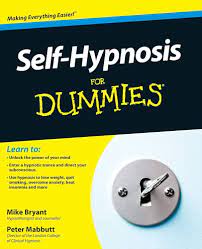Title: The Art of Falling Asleep Instantly: Tips and Techniques
Introduction:
Sleep is a vital aspect of our overall well-being, allowing our bodies and minds to recharge and rejuvenate. However, falling asleep instantly can be a challenge for many individuals. If you find yourself struggling to drift off into dreamland, fret not! In this article, we will explore effective tips and techniques that can help you achieve a state of deep relaxation and fall asleep quickly.
Establish a Consistent Sleep Routine:
Creating a regular sleep routine is essential in training your body to recognize when it’s time to sleep. Aim to go to bed and wake up at the same time every day, even on weekends. This consistency helps regulate your body’s internal clock, making it easier to fall asleep instantly.
Create a Relaxing Sleep Environment:
Your sleep environment plays a crucial role in promoting instant sleep. Ensure your bedroom is quiet, dark, and at an optimal temperature for comfortable rest. Consider investing in blackout curtains, earplugs, or white noise machines to minimize disturbances that may hinder quick sleep onset.
Practice Relaxation Techniques:
Engaging in relaxation techniques before bedtime can significantly enhance your ability to fall asleep instantly. Deep breathing exercises, progressive muscle relaxation, or even gentle stretching can help calm your mind and release tension from your body.
Limit Exposure to Blue Light:
The blue light emitted by electronic devices such as smartphones and tablets can interfere with the production of melatonin—a hormone that regulates sleep-wake cycles. Avoid using electronic devices for at least an hour before bedtime or consider utilizing blue light filters or apps that reduce the impact of blue light on your eyes.
Create a Pre-Sleep Ritual:
Establishing a pre-sleep ritual signals to your body that it’s time to wind down and prepare for restful sleep. Engage in activities such as reading a book, taking a warm bath, listening to calming music, or practicing meditation. Find what works best for you and incorporate it into your nightly routine.
Avoid Stimulants:
Consuming stimulants close to bedtime can make falling asleep instantly challenging. Limit your intake of caffeine, nicotine, and alcohol, as they can disrupt your sleep patterns and hinder the onset of sleep. Instead, opt for herbal teas or warm milk, which can have a soothing effect on the body.
Create a Comfortable Sleep Environment:
Invest in a comfortable mattress and pillow that provide proper support for your body. Choose breathable bedding materials that help regulate temperature and promote a cozy sleep environment. Ensuring physical comfort can significantly contribute to falling asleep instantly.
Clear Your Mind:
A racing mind can be a significant obstacle to instant sleep. If you find yourself overwhelmed with thoughts or worries, consider keeping a journal by your bedside to jot down any concerns before attempting to sleep. This practice helps offload mental burdens and allows for more peaceful rest.
Conclusion:
Falling asleep instantly is an achievable goal with the right techniques and practices in place. By establishing a consistent sleep routine, creating a relaxing environment, practicing relaxation techniques, limiting exposure to blue light, adopting pre-sleep rituals, avoiding stimulants, creating a comfortable sleep environment, and clearing your mind before bed—you can enhance your ability to fall asleep quickly and enjoy restful nights of sleep consistently.
Remember that everyone’s journey towards instant sleep may differ; therefore, it’s important to experiment with different strategies until you find what works best for you. Prioritize self-care and make quality sleep a priority in order to reap the countless benefits it offers for your overall well-being.
Quick and Effective Tips for Instantly Falling Asleep
- How can I fall asleep fast right now?
- How can I fall asleep in 5 minutes?
- How to fall asleep in 1 minute?
- How can I trick my brain into falling asleep?
How can I fall asleep fast right now?
If you’re looking to fall asleep quickly right now, here are some tips that may help:
- Relaxation Techniques: Practice deep breathing exercises or progressive muscle relaxation. Close your eyes, take slow, deep breaths, and focus on relaxing each part of your body from head to toe.
- Create a Comfortable Environment: Ensure your bedroom is dark, quiet, and at a comfortable temperature. Use earplugs or a sleep mask if necessary.
- Avoid Electronic Devices: Turn off electronic devices such as smartphones, tablets, or laptops at least 30 minutes before bed as the blue light emitted can interfere with sleep.
- Dim the Lights: Lower the lights in your bedroom to signal to your brain that it’s time to wind down and prepare for sleep.
- Clear Your Mind: If you have racing thoughts or worries, try writing them down in a journal before bed to help clear your mind and alleviate any mental burdens.
- Avoid Stimulants: Refrain from consuming caffeine or nicotine close to bedtime as they can keep you awake. Instead, opt for herbal tea or warm milk which can have a soothing effect.
- Find a Comfortable Position: Lie down in a comfortable position that allows your body to fully relax. Experiment with different pillows or positions until you find what works best for you.
- Focus on Breathing: Concentrate on your breath and try counting each inhale and exhale to divert attention away from racing thoughts and promote relaxation.
- Visualization Techniques: Imagine yourself in a peaceful setting such as a beach or forest and visualize yourself becoming more relaxed with each breath.
- Avoid Clock Watching: Resist the temptation to constantly check the time as it can create anxiety about falling asleep quickly. Instead, turn clocks away from view or place them out of reach.
Remember that falling asleep instantly may not always be possible, especially when feeling stressed or anxious. However, by implementing these techniques consistently and establishing a healthy sleep routine, you can improve your ability to fall asleep more quickly over time.
How can I fall asleep in 5 minutes?
Falling asleep in just 5 minutes can be challenging, but there are techniques you can try to help you relax and transition into sleep more quickly. Here are some tips:
- Progressive Muscle Relaxation: Start by tensing and then releasing each muscle group in your body, starting from your toes and working your way up to your head. This technique helps release tension and promotes relaxation.
- Deep Breathing: Practice deep breathing exercises to slow down your heart rate and calm your mind. Breathe in deeply through your nose, hold for a few seconds, and exhale slowly through your mouth. Focus on the sensation of the breath as it enters and leaves your body.
- Visualization: Imagine yourself in a calm and peaceful place, such as a beach or a serene garden. Visualize the sights, sounds, and smells of this place to create a soothing mental environment that promotes relaxation.
- Use Relaxing Scents: Certain scents like lavender, chamomile, or vanilla have calming properties that can help induce sleepiness. Consider using essential oils or scented candles in your bedroom to create a soothing atmosphere.
- Limit Stimulus: Create a conducive sleep environment by keeping distractions to a minimum. Turn off electronic devices or put them on silent mode to avoid disruptions from notifications or bright screens that can interfere with sleep onset.
- Adjust Room Temperature: Ensure that your bedroom is at a comfortable temperature for sleep—typically between 60-67°F (15-19°C). A cooler room temperature can promote better sleep.
- Avoid Clock-Watching: Constantly checking the clock can increase anxiety about falling asleep quickly, making it even harder to do so. Turn clocks away from view or cover them up if necessary.
- Establish a Bedtime Routine: Engage in relaxing activities before bed such as reading a book, taking a warm bath, or listening to calming music. Establishing a consistent routine signals to your body that it’s time to wind down and prepare for sleep.
Remember, falling asleep instantly may not always be possible, especially if you’re dealing with chronic sleep issues or underlying conditions. If you continue to struggle with falling asleep or experience persistent sleep problems, it’s advisable to consult a healthcare professional for further guidance and support.
How to fall asleep in 1 minute?
Falling asleep in just one minute may seem like a lofty goal, but there are techniques you can try to help you relax and ease into sleep quickly. While it may not work for everyone, many people find success with the following method known as the “4-7-8” breathing technique:
- Find a comfortable position: Lie down in your preferred sleeping position, ensuring that your body feels relaxed and supported.
- Relax your facial muscles: Take a moment to consciously release any tension in your forehead, jaw, and around your eyes. Let your face feel soft and calm.
- Breathe in deeply through your nose: Inhale quietly and deeply to a mental count of four. Feel the air filling up your abdomen as you breathe in.
- Hold your breath: Once you’ve completed the inhalation, hold your breath for a count of seven seconds. Maintain a relaxed state during this pause.
- Exhale slowly through your mouth: Release the breath slowly and completely through your mouth to a count of eight seconds. Allow any stress or tension to leave your body as you exhale.
- Repeat the cycle: Begin another round by inhaling deeply through your nose for four seconds, holding for seven seconds, and exhaling through your mouth for eight seconds.
- Continue for several cycles: Repeat this breathing pattern for at least four full cycles or until you feel yourself drifting off to sleep.
It’s important to note that this technique may take some practice before it becomes effective for you. Additionally, it’s not recommended if you have respiratory issues or breathing difficulties without consulting with a healthcare professional first.
In addition to the 4-7-8 breathing technique, other relaxation methods such as progressive muscle relaxation, visualization exercises, or listening to calming music can also aid in falling asleep quickly. Experiment with different techniques until you find what works best for you personally.
Remember that establishing a consistent sleep routine, creating a calming sleep environment, and practicing good sleep hygiene are also essential for promoting better and faster sleep.
How can I trick my brain into falling asleep?
Tricking your brain into falling asleep involves utilizing various techniques to promote relaxation and signal to your body that it’s time to rest. Here are some methods you can try:
- Progressive Muscle Relaxation (PMR): Start by tensing and then releasing each muscle group in your body, starting from your toes and moving up to your head. This technique helps release tension and promotes physical relaxation.
- Visualization: Imagine yourself in a calm and peaceful setting, such as a serene beach or a tranquil forest. Focus on the details of the scene, engaging your senses to create a vivid mental image that promotes relaxation.
- Breathing Exercises: Practice deep breathing techniques, such as diaphragmatic breathing or the 4-7-8 technique. These exercises help slow down your heart rate, reduce stress, and induce a state of relaxation.
- Guided Imagery or Meditation: Listen to guided meditation recordings or use smartphone apps that offer sleep-inducing audio programs. These can help calm your mind, reduce racing thoughts, and guide you into a state of deep relaxation conducive to sleep.
- White Noise or Relaxing Music: Play soothing sounds like white noise, nature sounds, or gentle instrumental music in the background while you lie in bed. These sounds can drown out external disturbances and create a calming atmosphere.
- Adjust Your Sleep Environment: Ensure that your bedroom is dark, quiet, and at an optimal temperature for sleep. Use blackout curtains, earplugs, or a fan to create an environment that promotes deep relaxation.
- Avoid Stimulating Activities: Engage in activities that promote relaxation before bedtime while avoiding stimulating activities like intense exercise, bright screens (e.g., smartphones or laptops), or engaging in mentally demanding tasks close to bedtime.
- Establish a Bedtime Routine: Create a consistent pre-sleep routine that includes relaxing activities like reading a book, taking a warm bath, practicing gentle stretching, or sipping herbal tea. This routine helps signal to your brain that it’s time to wind down and prepare for sleep.
Remember, the key is to find what works best for you. Experiment with different techniques and incorporate them into your nightly routine until you discover the ones that help trick your brain into falling asleep quickly and easily. Patience and consistency are key when adopting these methods, as it may take time for your brain to adjust to new sleep-inducing habits.



